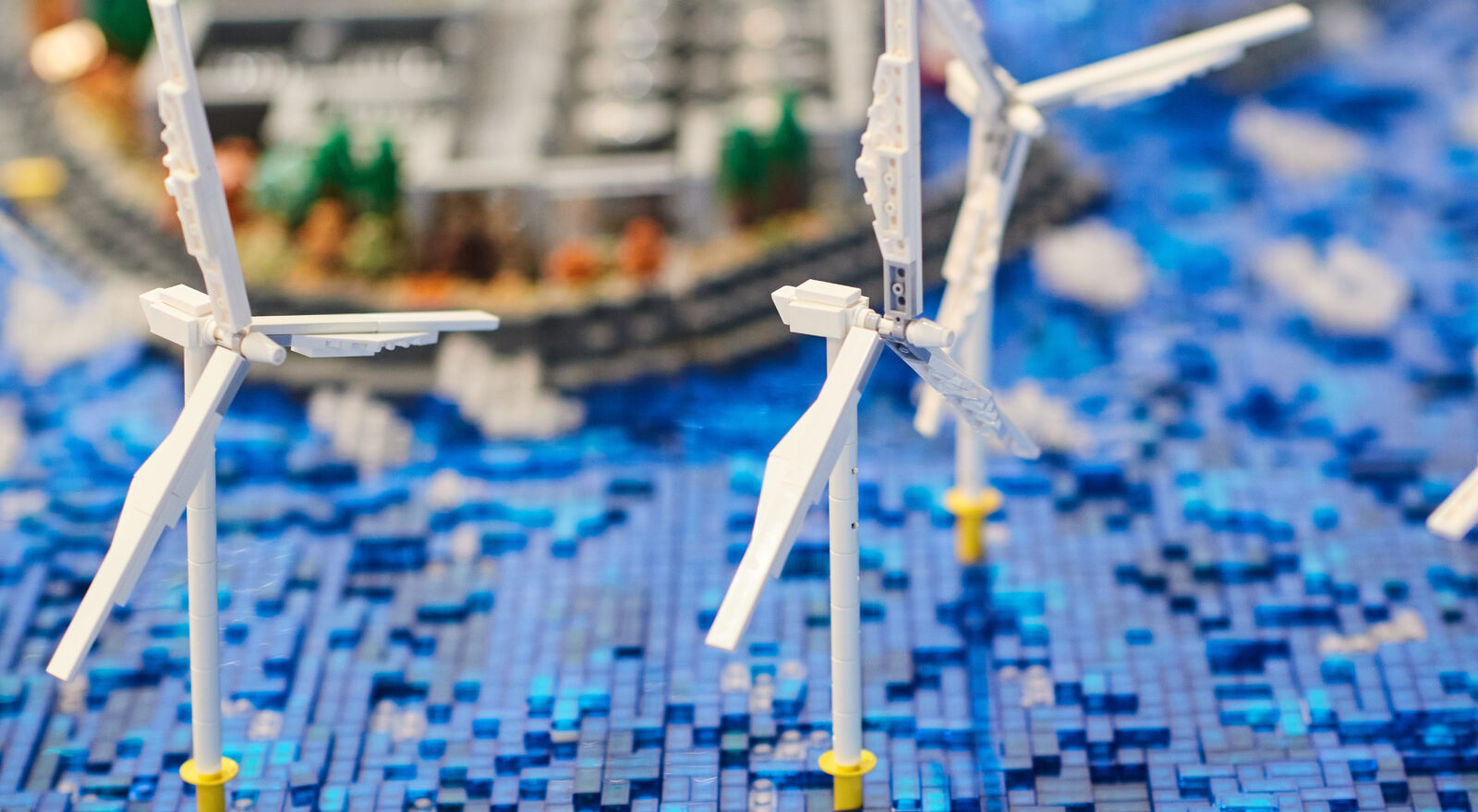On 23-25 November 2021, the Bella Center in Copenhagen hosted “Electric City 2021”, WindEurope’s flagship event, in collaboration with WindDenmark. 8,000 participants, 400 exhibitors, 70 conference sessions and over 300 presenters from the world of wind and beyond were present in Denmark’s capital for the biggest in-person event in a while. Government Ministers, leading CEOs, and experts from the worlds of technology, policy and finance crossed swords, exchanged ideas, and finally pushed change.
WindEurope is a returning client in Copenhagen; what was special about this conference was the Electric City concept. Seeking to make the message of sustainability widespread, the association recognized the necessity of intersectoral collaboration. Anders Mika Dalegaard, Head of Members & International Business Development at WindDenmark, explains: “The wind industry is more than just a distinction of on- and offshore. We need to have that sector coupling, because we need to have the energy that can be provided by wind energy to go into other sectors, like transport, planes, and heating. This means we have new voices and new stakeholders at this event. We are keeping wind energy as a cornerstone, but the dialogue is spreading out.”
Setting the Legacy Goals
The idea that all sectors are interconnected and the desire to drive sustainable change further led the association to the engagement of setting legacy goals, that reach out beyond their next event. That is when Copenhagen CVB, the host city’s convention bureau, brought into play their prominent Copenhagen Legacy Lab. As discussed in detail in a previous article of Boardroom, this innovative initiative facilitates the systematic and proactive exploration and development of untapped potential impact activities.
Annika Rømer, Senior Manager of Copenhagen Legacy Lab, said: “WindEurope came to us with a clear legacy vision. As an international association, they come with global challenges. Our job was to co-create the right outreach activities within our nation to be part of the solution to their challenges, to see the ripples beyond the Copenhagen conference.” As the legacy programme suggests, the right questions were asked to support a vision and mission, relevant local stakeholders were selected and came together around ideation workshops with the association and committed to contributing to identified legacy goals. The result was a number of impactful activities.
A Variety of Outreach Activities
Dalegaard said: “We put in the effort in pinpointing the stakeholders, not only for our own sector, but for many others, trying to support the event. We wanted delegates to have a good experience coming here and promote the Danish wind industry. So, we got involved with the Danish Energy Agency, the Ministry of Climate and Energy, the National TSO, as well as Copenhagen Capacity, which focuses on assisting startups and attracting investment and talents. We involved the Danish Foreign Ministry and State of Green, a Danish public-private partnership facilitating relations with international stakeholders; and had 60 companies in total at the Pavillion of Denmark covering the exhibition floor showcasing their products.”
With a focus on future supply of young talents and workforce, 50 students from the Danish Technical University were also part of the outreach activities. They were offered educational opportunities and in return they pitched ideas of their own to big energy companies. In fact, the university had the chance to promote its online Master course, attracting more professionals and receiving global recognition.
The idea of Denmark’s wind power energy islands also came in the spotlight. The two offshore energy islands are to be completed in 2030 and will be able to supply the average electricity consumption of 5 million households. The conference raised awareness for the benefits of the islands for Denmark and the world. The Lego Master demonstration used to visualize the islands also offered attendees opportunities for innovative ideas and development of the project. Important collaboration reached at the conference between interested countries (Germany, Holland and Belgium, UK) indicates the legacy achievements.
And After the Conference?
The conference was crowned a success, with immediate impact as well as potential legacy tracks leading wind power into the future. The challenge remaining now is to monitor and follow the outcomes of these activities. Rømer says: “Our job now is to use and develop the tools that can support us in quantifying the outreach activities, that are to be tracked. And figure out if we need to do an impact assessment looking at short term meeting outcomes versus more long-term legacy results. That’s where, among others, digitalization of our processes and new economic methods come in, supporting us in monitoring the value created for both the destination and association.”
Bettina Reventlow-Mourier, Deputy Convention Director at Copenhagen CVB, who has been deeply involved in the congress from the outset and in its legacy process, informs us on the measurement challenge: “Along with external consultants, we are looking into the methodology on how we can measure the broader impacts and long-term legacies in the future. We will scale the methodology and find a model for not only WindEurope, but all the cases that we run in our Legacy Lab. For sure there are several indicators, that we can easily implement on short-term positive impacts and immediate meeting outcomes. The long-term ones will be more of a challenge, but that is part of the journey and vision for achieving legacy.”
The fact that the WindEurope conference was held in Copenhagen before (2019) certainly gave organizers and hosts a sense of ease and made the collaboration easier. The fact that the conference is confirmed to come back to the city in 2023, and that Copenhagen is known worldwide as a groundbreaker within congress legacy work, will certainly help with tracking, identifying, and measuring the impact of the 2021 event.
Info & Contact: www.copenhagencvb.com / to know more about Copenhagen Legacy Lab, email anr@woco.dk
